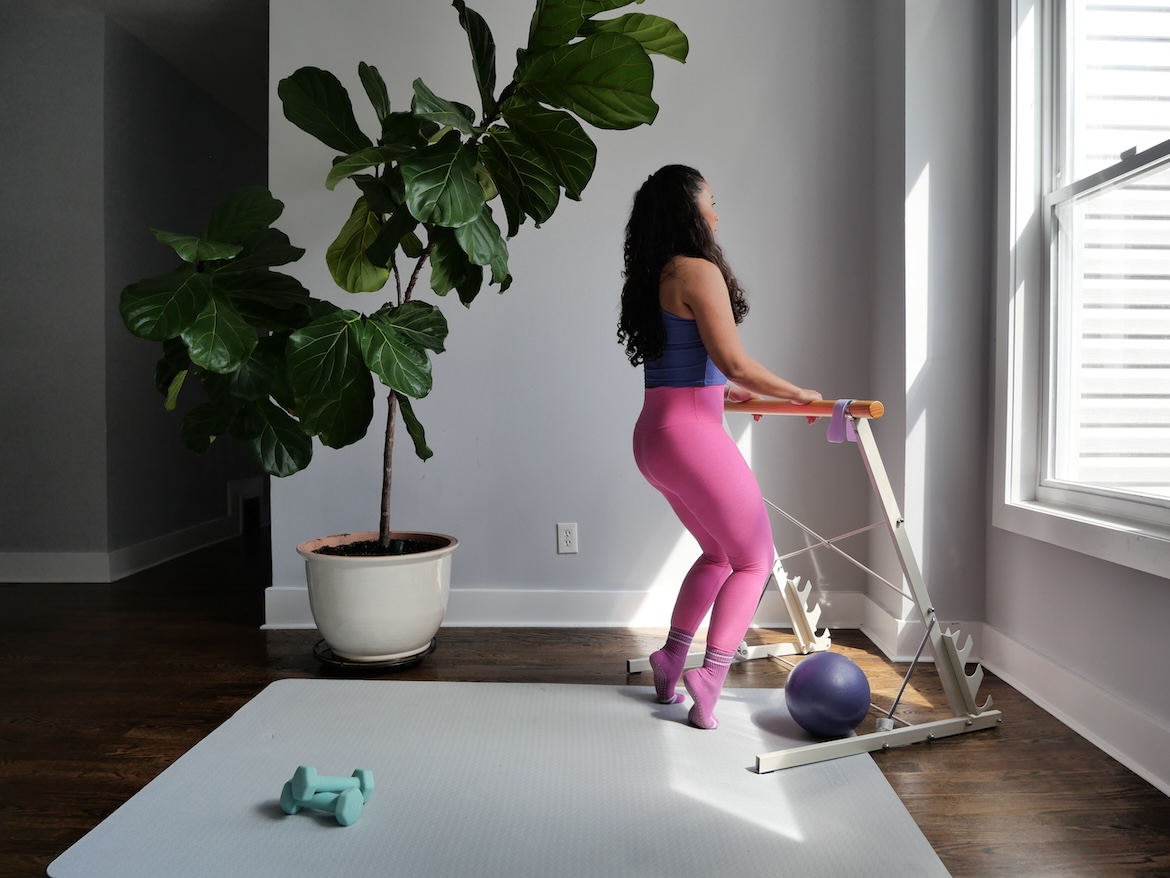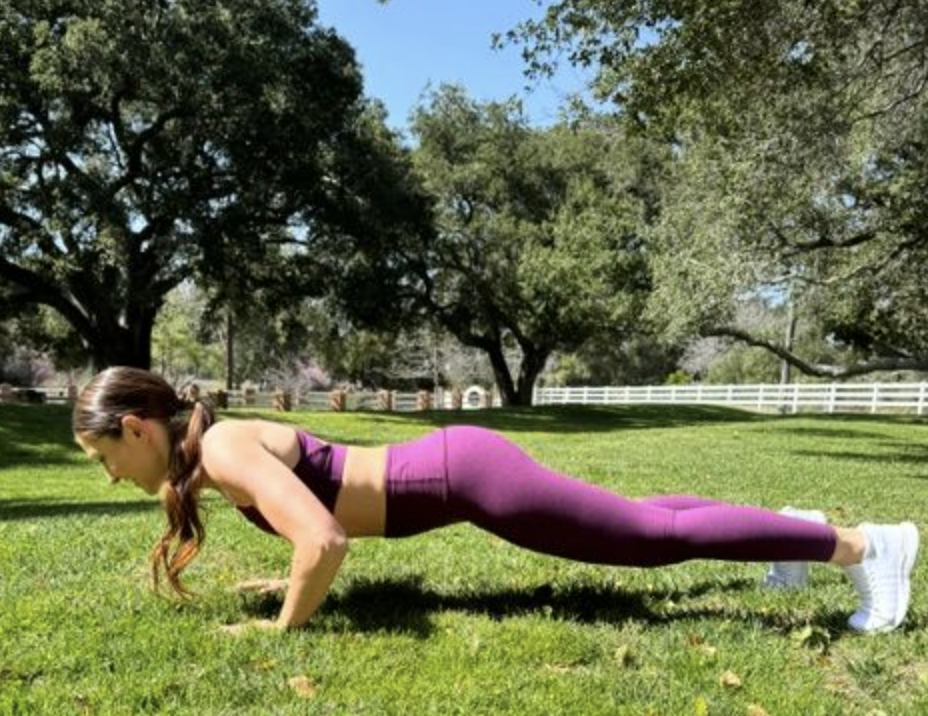Towards the end of every year, I catch myself lamenting how much my health and fitness routines have slipped in the run-up to the holiday season. Oh well, I’ll just harness that New Year’s resolution energy in January, I think to myself.
This year, I’ve decided, will be different. (And I really do mean it this time!) Yes, I know that most new year’s resolutions epically fail. So I started wondering: What would happen if I “test drove” some resolutions right away? Rather than waiting for an artificial fresh start dictated by the calendar, I could play around with behavioral changes as soon as I felt called to. And just maybe, trying to implement improvements before January 1 could lead to greater consistency once the New Year actually rolls around. Out with expectations of immediate perfection; in with an attitude of curiosity and experimentation!
In particular, there are a couple of healthy habits I’ve been wanting to incorporate into my life:
Taking a walk outdoors with my significant other every morning
Committing to lights out by 10:15 p.m. every weeknight
To design a successful plan—and find out if my idea of a test drive even made scientific sense—I enlisted the help of three psychology experts. All of them agreed that simply relying on January’s “fresh start” feeling can lead to quickly abandoning our best-laid plans. Unfortunately, we don’t magically become different people when the calendar changes. Since research shows that most resolutions tend to falter around week two of January, clinical psychologist Carla Marie Manly, PhD, advised me to run my experiment for three weeks at the least. But the longer, the better if I wanted it to stick. “There is substantial research showing that it takes, on average, more than two months for a behavior to become automatic,” she told me.
So… how did the experiment go? All told, my “pre-resolutions” gave me new insight on this whole tradition. Here’s what I learned.
It’s best to start slowly
Licensed clinical social worker and brain-based personal trainer Elyse D. Schunkewitz, LCSW, suggested that I kick off my experiment by observing my current behaviors, possibly via a journaling practice: “If you don’t have an understanding of how you’re engaging in habits at the moment, then how are we going to know what improvement looks like?”
Once I’m aware of my baseline, she says, I can set and track goals aimed at slow, incremental improvement. How many goals? “Engaging in one at a time is the best option to ensure you’re not draining yourself to the point that no habits get changed,” Schunkewitz says.
“Sometimes change can be uncomfortable and hard because it’s unfamiliar, not because it’s unhealthy.” —Jamila Jones, LCPC
My takeaway: Ideally, I would have experimented with one resolution and one resolution only. However! You could make the argument that my chosen resolutions form what psychologists call a “habit stack,” since both behaviors support each other. When I go to bed on time, I usually get enough sleep that taking a walk the next morning feels like a treat, not a chore. Conversely, morning sunshine plus physical activity help put me on track to wind down when bedtime rolls around. Win-win.
That said, the next time I make a resolution, I’ll be following Schunkewitz’s advice of implementing one at a time, ideally by stacking any new habit on top of a longer-established one in order to keep the changes manageable.
Your “why” is what keeps you going
Ever impulsively made a New Year’s resolution based on external expectations or societal norms? Same. Jamila Jones, LCPC, founder of Reclaiming Minds Therapy, encouraged me to dig (much) deeper: “Are these things actually in alignment with the life that you want for yourself? With the version of yourself that you want to show up as?”
By taking a few weeks at the end of the year to try out my ideas while reflecting on who I really am and what I really want, I (hopefully) got closer to setting goals grounded in what Jones calls “inspired action”—that is, behavior aligned not only with the vision I see for my ideal future self, but also with my current environment and circumstances.
We tend to make time for what’s truly important to us. By contrast, resolutions based on what we think we should do are likely to fail—fast. “When you feel an internal connection to your resolution, and it feels rooted in what you know to be true about yourself, then you typically will be able to connect to it for a longer period of time,” Jones says.
My takeaway: Strolling around the neighborhood every morning isn’t really about the exercise. It’s about undistracted quality time with my S.O. and enjoying some gentle movement outdoors to start my day on a positive note. Put another way, this resolution is a daily vote for two major priorities in my life: my romantic relationship and my mental health. Even when I was tempted to hit snooze instead, those motivations kept me going. If I were a betting woman, I’d say this is one habit I’ll be able to stick with come 2024.
Choose curiosity, not criticism
Dr. Manly points out that many of us delegate New Year’s resolutions to our inner critic. “That critical mind is often tied to perfectionism inherited from society or our parents,” she says. The problem, of course, is that perfectionism carries the weight of an all-or-nothing paradigm: “If I don’t fulfill my resolutions flawlessly, I will have failed utterly.” That internal monologue likely sounds familiar to those of us who have guiltily discarded ambitious resolutions before January is over.
To avoid this pitfall, Dr. Manly suggests assigning any resolutions to an internal compassionate researcher: “Learn to step back and nonjudgmentally observe what’s going on. What’s preventing you from making it to that yoga class? What happens right before you eat all the chocolate chip cookies?” When—not if—a resolution doesn’t get checked off one day, Dr. Manly says, I shouldn’t consider that a “failure.” Rather, I should simply reflect on why it didn’t happen—and stay open to revising the original resolution.
My takeaway: Two weeks into this experiment, I was forced to perfection-proof my resolutions when I was cast in a play that rehearses on weeknights until 9:30 p.m.. My revised definition of success now looks like turning the lights off between 10:15 and 11 p.m., waking up 30 minutes later than before, and taking a shortened walk the next morning.
This wasn’t my original plan, but it allowed me to keep at it in a way that worked given my new circumstances. Otherwise, I’d be leaving myself vulnerable to what psychologists call the “what-the-hell” effect, when a minor slip-up encourages giving up entirely.
Play the long game
At the three-week mark, Jones suggested I reflect on my progress so far with a generous mindset. “Give space and credence to what changes you have made,” she told me. “Sometimes change can be uncomfortable and hard because it’s unfamiliar, not because it’s unhealthy.” In my case, writing this piece was an opportunity to reflect on the challenging moments in my experiment and to let those hiccups inform my strategy going forward. For instance, even though a 10:15 p.m. bedtime wasn’t always feasible, I realized I can still work to avoid the revenge bedtime procrastination that pushes it even later.
Schunkewitz’s final advice to me: Keep going, with love. “Gentle self-compassion is about when you need to give yourself a break and show yourself some love and healing,” she explained. “Fierce self-compassion is about when you push yourself to do something even if you don’t want to, because it’s good for you.”
My takeaway: Some mornings, breaking my walking streak by sleeping in will be in my best interest. Other days, pushing myself to get up and get out will be the right choice. Now that I know what these resolutions actually feel like in practice, I feel more confident that I’ll know the difference when either situation arises down the line.
This experiment with a new perspective on New Year’s resolutions. Sure, it’s still tempting to buy into the clean-slate mindset offered by a brand-new year. But if the intention is important to me, what am I waiting for? Here’s to the (realistic, gradual, and flexible) resolutions that start today.






